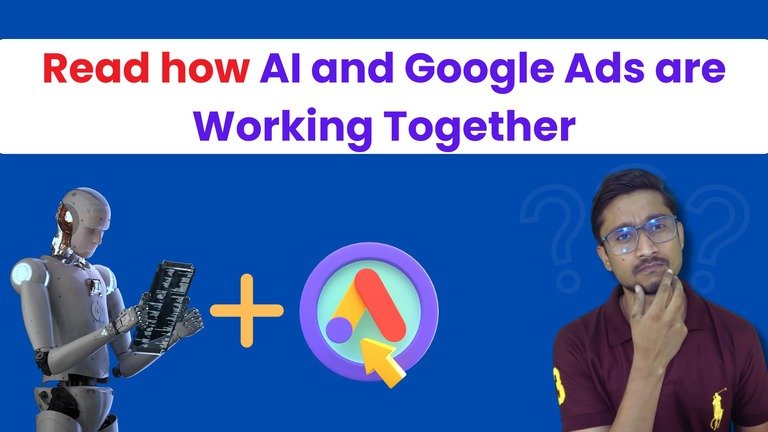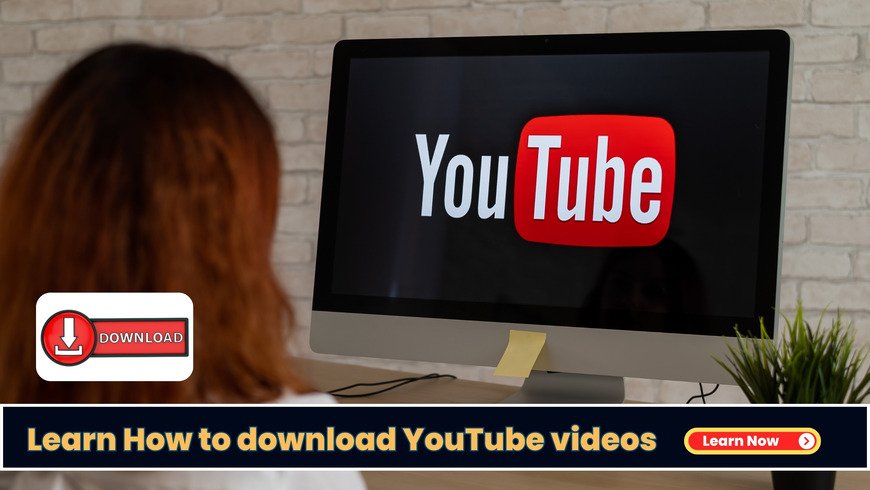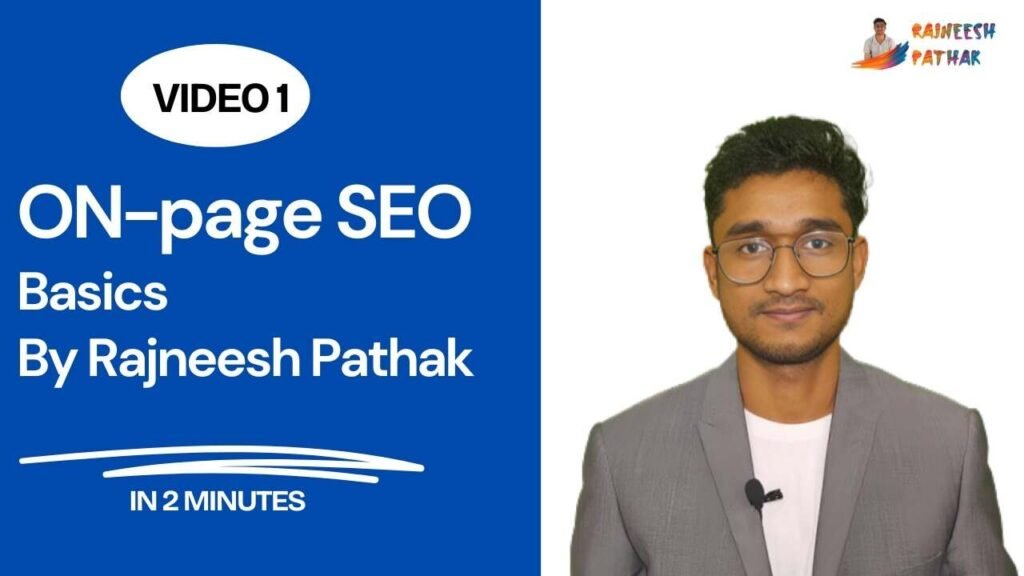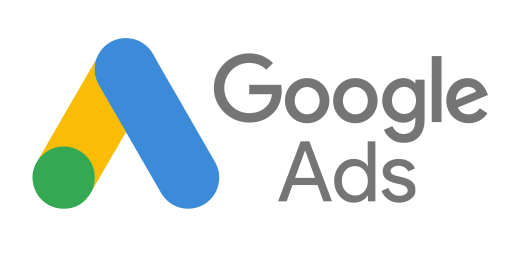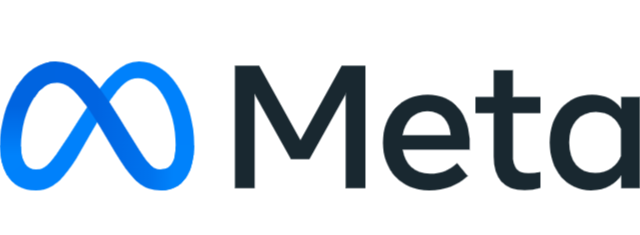SEO Search Engine optimized blog Part 3
Hello, I am Rajneesh Pathak Today, I am going to share my knowledge about a fully search-engine-optimized blog. This is the third part, and I will post until I complete it…
I am going to cover all copywriting and content optimization-related Things (Content, Meta Title, and description. copywriting or Robotic content detection ethics)

Table of Contents
SEO Blog Content, Meta Title, and description writing and optimization
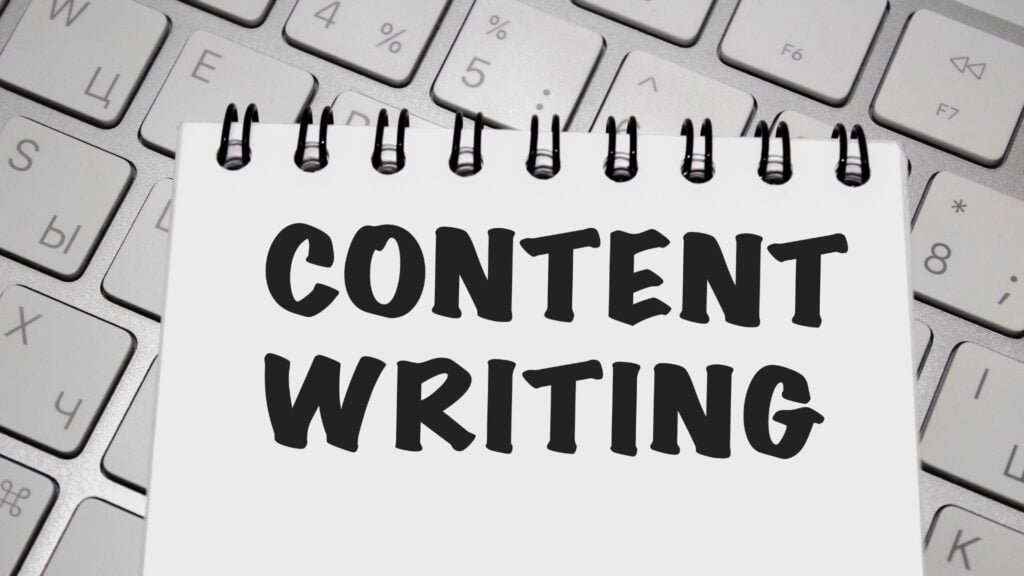
Once you start writing your content for your blog you need to keep in mind that you are going to give some unique content to your users. Always try to keep your content different from others that are available on the internet. and your content should be long more than 600 words because most search engines consider it a blog or page when your content has a good length.
Blog title optimization
In terms of content creation, if you’re putting the bulk of your efforts into crafting compelling content but neglecting the art of writing engaging titles, it might be time for a strategic reassessment.
There’s a widely acknowledged maxim in advertising that posits writing a headline is equivalent to 50% of your content optimization. Because while 100% of your audience may peruse your title, less than 50% will delve into the content, and that’s assuming you have a well-crafted title. A lackluster title may not even secure half the readership.
Although Google has never officially confirmed it, industry knowledge suggests that click-through rates play a role in search ranking algorithms. While this factor alone won’t guarantee stellar results, when you find yourself in a tussle to climb a few positions within the top 10 results, an enhanced click-through rate can be the differentiating factor that propels you ahead of the competition.
Crafting compelling titles that irresistibly draw clicks not only positions you ahead of rivals (even if you rank below them) but also signals to Google that your content is more pertinent to the query. If your result consistently outperforms the average click-through rate for a given query, Google is likely to elevate your ranking, keeping it there as long as it continues to attract the majority of clicks.
Now that you comprehend the myriad advantages of refining your title-writing skills, let’s delve into the Title Readability tests that Rank Math conducts on your posts.
Points for Title
- Focus Keyword at the Beginning of the SEO Title
- Sentiment in a Title
- Use of Power Word in Title
- Page titles should be around 580 pixels in length.
Blog Description Optimization

The SEO description is the snippet that seems just below the title in the SERP preview. It gives Google and other search engines an overview of the post or webpage, which helps them make ranking decisions. It also gives the users a reason to click through to your webpage or blog post rather than click on any other webpage or blog post.

Crafting a compelling meta description is like composing a digital teaser – a snippet that beckons users to click and discover what lies beyond. A well-crafted meta description is your chance to be the charming storyteller, inviting visitors into your online world with a glimpse that leaves them eager to unravel the full tale. So, when you sit down to pen your meta description, think of it as the welcoming invitation that beckons readers into the engaging universe you’ve meticulously crafted.
Important points for meta description: –
- Always add the primary focus Keyword in the Meta Description
- Meta description should be 920 pixels long you can check it on to the web
Blog copywriting or Robotic content detection ethics
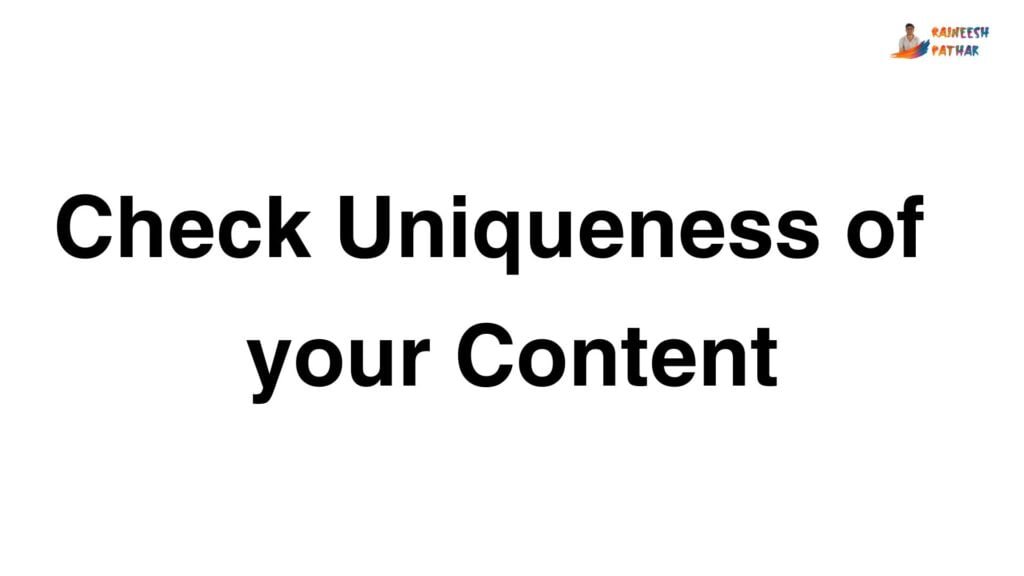
For starters, unique content means content that’s 100% original or produced on its own and isn’t duplicated from anywhere. It’s an algorithm of Google that relates to search engine optimization (SEO) as it plays a big role in determining search rankings in SERPs.Because Google always wants to present something very unique in front of its users in case of improving their knowledge.
Here I am going to put examples of how you can check your content uniqueness and copywrite your content
Once you are done with writing your content it’s just to check your content uniqueness.
Let’s take an example from this article.
I am going to take this paragraph for content uniqueness checking and I am going to analyze this part of the content in a tool called Dupli Checker
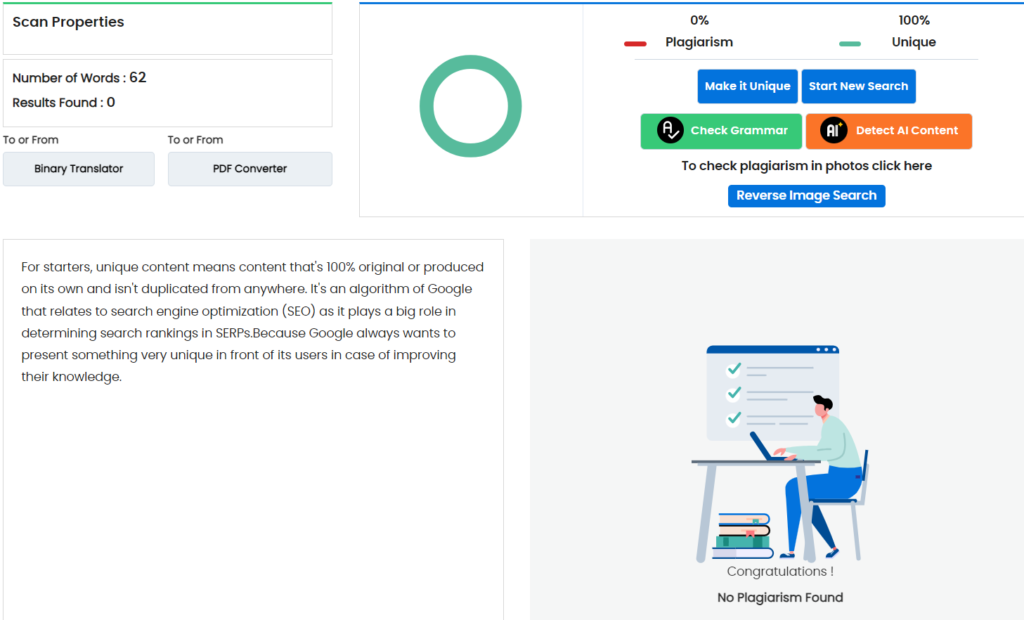
Now you can see here this content is 100% unique and it’s 62 words long paragraph. It means we passed Google’s copywriting policy.
Now it’s time to check that “our content is human-written or AI-written.”
Let’s check the same content here too
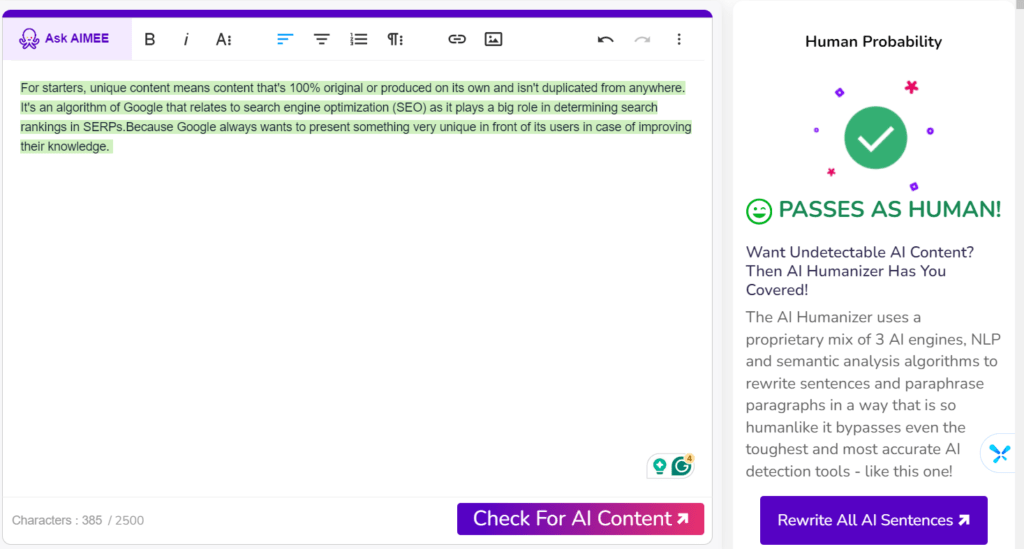
Now you can see that this content is 100% Human written content. It means we passed Google’s AI content detector policy.
Based on my experience, these tools are not only perfect but also sufficient for enhancing your blog visually. It’s important to note that the insights I share in my blog are based on my personal experiences, and I mention these tools not as advertisements but because I genuinely believe they are the best tools I’ve ever tried in my life.
Thank you for reading this article carefully
You can read my other articles here. Please click on the article and
the third article is here
Please read this article carefully and try these tools as per your requirements.

